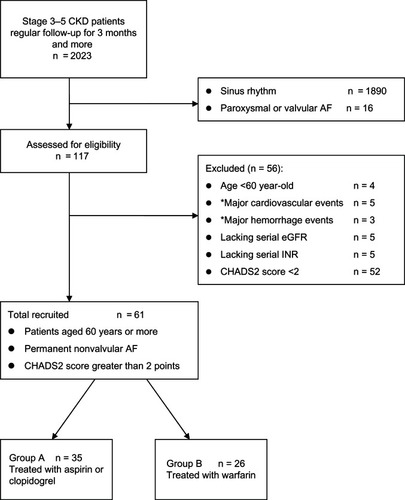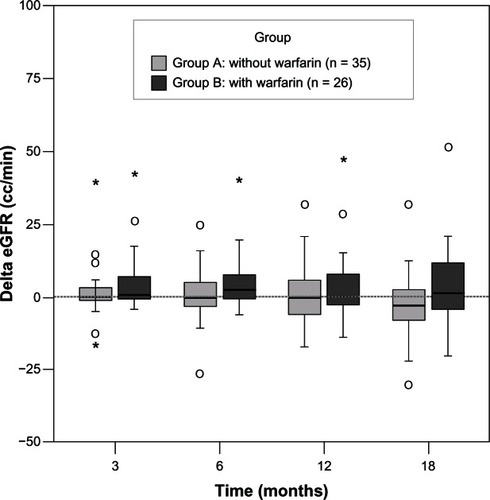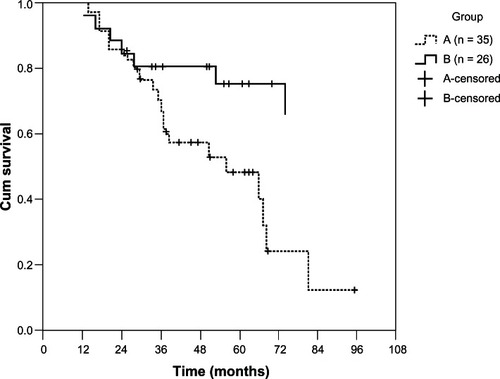Figures & data
Figure 1 Participant flow diagram depicting screening/enrollment process.
Abbreviations: CKD, chronic kidney disease; AF, atrial fibrillation; CHADS2 score, congestive heart failure (1 point), hypertension (1 point), ≥75 years old (1 point), diabetes (1 point), prior stroke or transient ischemic attack or thromboembolism (2 points); eGFR, estimated glomerular filtration rate; INR, international normalized ratio.

Table 1 Categorical comparison of data in enrolled age, baseline renal function, and biochemistry between group A and group B
Table 2 Results of linear regression model using generalized estimating equation method for glomerular filtration rate
Figure 2 Change in estimated GFR between the two groups was measured over time (at months 3, 6, 12, and 18) after introduction of warfarin.
Abbreviations: GFR, glomerular filtration rate; eGFR, estimated glomerular filtration rate.

Table 3 Multivariate Cox proportional hazards regression analysis of mortality
